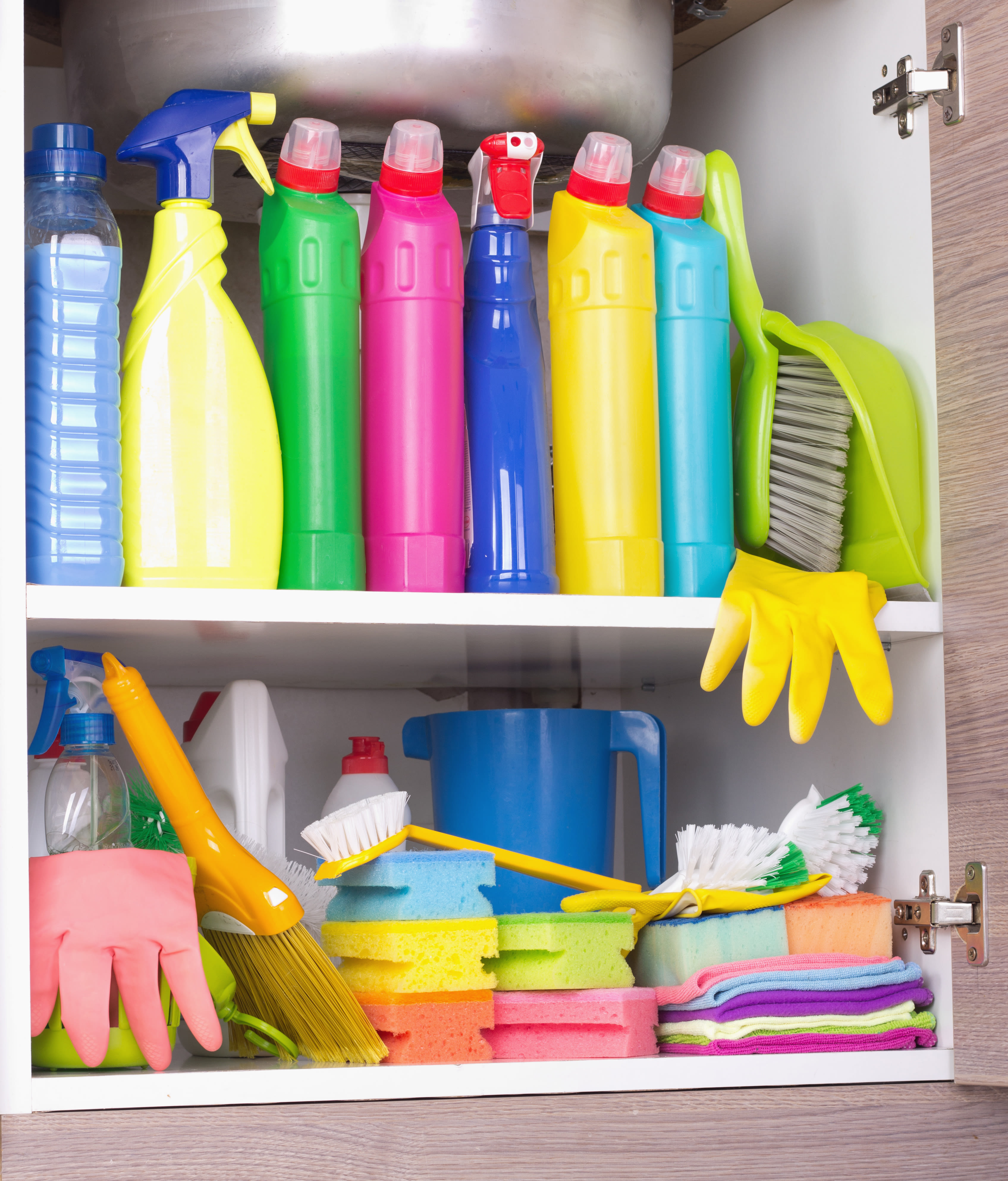
Cleaning supplies should always be kept in a secure place where they are easy for your employees to reach and where there is enough space to properly store all necessary materials.
Storing cleaning chemicals and supplies is often an afterthought, but that can lead to consequences that range from inconvenient to serious. That’s why you should routinely check to see if your cleaning equipment is stored securely if you are running out of key items and if your personnel know where everything is.
Storing Cleaning Supplies Safely
When storing cleaning supplies at your facility, the most important factor is safety. This is especially critical if young children or animals enter your workplace.
All your materials should be out of reach or locked. You can use drawers or cabinet straps to ensure that cabinets cannot be opened or left open.
Designate one place for storing your cleaning materials. That way, you will know where all your supplies are. In an emergency, you won’t be going from cabinet to cabinet or room to room to find what you need.
Make It Easy
Organize the area efficiently. Be careful not to stack things so deeply that you spend more time pulling things out of a cabinet than you do performing the actual clean-up.
Invest in a portable caddy, and keep it near your supplies. Put the most important items into the caddy—rags, sponges, scrub bushes and cleaning sprays. That way everything you need can be easily and quickly carried to the site of a spill or other accident, and you won’t have to make multiple trips. A second caddy can be useful if large spills or major accidents are possible.
Larger cleaning tools, like steam mops and vacuum cleaners, should have their own designated spaces. Because they are bulky, you don’t want them impeding your access to smaller cleaning equipment that you may need more frequently.
Consider Temperature & Placement
Cleaning chemicals should be stored in a clean, cool, dry space because certain cleaning solutions can react dangerously when they are exposed to high levels of humidity or extreme temperature fluctuations. In some cases, the reactions can be hazardous to humans.
The chemicals also should be kept away from HVAC intake vents. Instead, put them in well-ventilated areas to ensure that fumes from the chemicals cannot spread to other areas of your facility.
For safety reasons, cleaning equipment and supplies should not be stored higher than eye level. They should never be placed on a top shelf because the act of taking items down can cause them to fall, especially if the items are being retrieved quickly.
For similar reasons, shelves should not be overcrowded. Overcrowding creates the potential for items to fall, and it can make materials difficult to locate in a hurry.
Marking & Listing Cleaning Supplies
Everything should be marked and labeled so the contents of a cabinet can be quickly identified. Labeling is especially vital in case of an emergency when people can be disoriented or someone unfamiliar with the layout of your facility may be looking for supplies.
Solutions should ideally be kept in their original containers, but if you reappropriate them into all-purpose spray bottles, mark those spray bottles accordingly. Bleach, for instance, can look like water.
You also should keep a complete list of cleaning supplies and materials available in your facility. Knowing the safety and toxicity of certain chemicals is especially important. It might be advisable to limit access to the chemicals to a select group of employees.
Whenever any of the cleaning supplies are used, a note should be made for you and your facilities manager. A note will allow you to monitor when to order replacements or new items and ensure that you don’t have to address a spill or an emergency when you are low on supplies.
Some cleaning solutions can be flammable or corrosive, so they should be kept away from important equipment and from places where they can be accessed by non-employees. Your staff should be trained on how to properly use safety equipment such as fire extinguishers that, if used improperly, can cause injuries.
Signal Words
OSHA recommends using signal words on labels to indicate the level of danger.
“Warning” indicates that the product is moderately toxic. The use of such products should be limited.
“Danger” means that the toxicity level of the product is prohibitively high, and it can cause permanent bodily damage to users if handled improperly (for example, without gloves or other forms of protection). Products marked “Danger” should be used only by a few, trusted employees.
Proper Organization
An important part of proper storage of cleaning supplies is their organization. The more effective the organization, the more efficient the use of the cleaning materials in both preventing and addressing spills. Chemicals always should be stored separately according to their hazard class so that dangerous combinations will not be mistakenly used together.
That means combustible and flammable chemicals and oxidizers should be kept away from direct sunlight, heat, flames, static electricity, and work operations that can cause sparks. If you have flammable materials in your cleaning supplies, they should be kept in a dedicated flammable materials storage cabinet.
Any open product that has not been used in one year should be properly disposed of. Reference the instructions on the product for safe disposal. An unopened, sealed product should usually be disposed of after two years. Again, check the instructions to find out how to dispose of items properly.
We Can Help
At Alsco, we believe that correct documentation, training, storage, and organization of your cleaning supplies can make your facility a safe and healthy place for your personnel and your clientele. We can handle your inventory management, making sure that you never run low on vital cleaning supplies. Our services can save you space, time and money. Let us help today.
References
Hazard Communication Standard: Labels and Pictograms. (February 2013). Occupational Safety and Health Administration.
